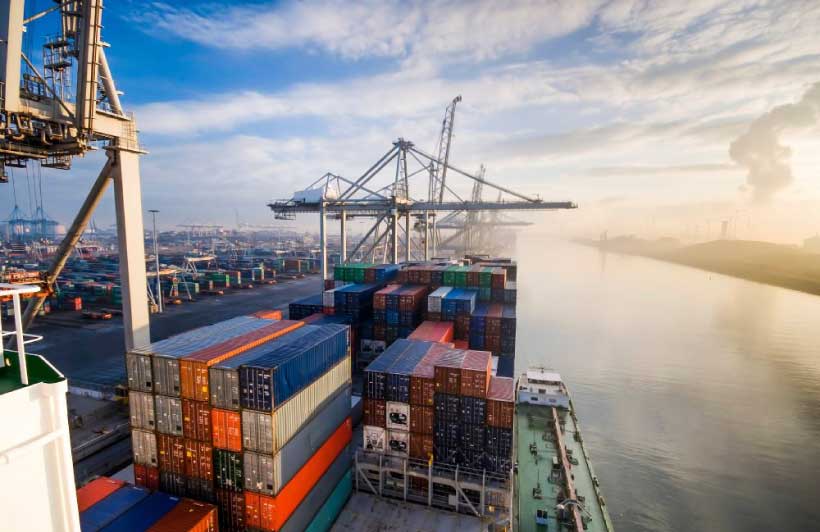Meeting the challenge of decarbonizing the world's ports
The ports and terminals sector serves as a microcosm of the value of decarbonization as it relates to transportation infrastructure. Not only are ports the major nodes and eco system for handling all cargo types both waterside and landside, they are also gateways for importing and exporting alternate fuels as demand for lower carbon footprint logistics solutions increase over time.
Additionally, ports and terminals as operational facilities will face pressure to become greener, leaner, and more resilient to climate change.
Ports and terminals with lower carbon emissions will contribute to a greener transportation and logistics system. They also influence the overall consumer carbon footprint of anything that is transported or consumed. Port owners and operators must, therefore, pursue realistic and sustainable goals that lead to the decarbonization of the supply chain and minimize direct and indirect impacts on the climate.
Hatch is committed to partnering with our clients in the quest for mitigating the impacts of climate change through initiatives such as decarbonization, adaptation, and resiliency. In addition to ports and terminals, we are well-positioned to assist clients in all aspects of infrastructure become more resilient while transitioning to low-carbon technologies, including rail, transit, tunnels, highways and bridges, and water. We have experts from various sectors and industries who join forces with the collective goal of addressing the toughest challenges and finding solutions our clients can implement.

Some key themes to consider include:
Decarbonization Road Maps
Large industrial complexes such as port developments and freezones can adjust their energy transition and decarbonization strategies and focus on the major enablers along the journey. They can also serve as cross-industry integrators across tenant organizations to realize synergies and contribute significantly to regional abatement targets.
Energy Master Planning
As part of long-term planning for every port, energy master planning forms an integral theme to support decarbonization goals. It is imperative to embrace the considerations of how ports consume and distribute energy, and how they support supply chain partners in decarbonization. This encapsulates various aspects from shore power for vessels through to lease conditions for tenants and infrastructure provision such as electric vehicle charging stations, battery swap facilities, hydrogen, etc.
Green Concrete Applications
Directly account for a significant reduction of embodied carbon during construction phases, which gives projects involving ports and other large facilities a head start on the decarbonization journey. This has a large impact given that concrete is responsible for 8% of global greenhouse gas emissions and stands as the second most consumed material worldwide, following water. Utilizing green concrete is crucial in mitigating CO2 emissions and promoting environmental sustainability.
Optimization of Operations
An in-depth understanding of operations, cargo handling solutions, and supply chain infrastructure is required to develop decarbonized solutions that are fit-for-purpose and meet sustainability goals. Changes in energy sources bring changes to the use model of transportation and cargo handling equipment, and solutions that preserve the high levels of efficiency and productivity that modern supply chains depend on is essential.
Resilient Infrastructure
Building resiliency into port infrastructure and operations will require a developed understanding of current and projected climate pressures, incorporating flexible designs that can adapt to changing conditions, prioritize redundancy in critical systems, and employ durable materials. Building resiliency in to port operations can be further supported by advanced technologies such as real-time monitoring, early warning systems, and comprehensive emergency response plans.
Ports can no longer be passive consumers, and must act to better manage internal and external energy factors.
COP28 will be addressing all of these issues and more. A desirable outcome from the conference would include:
- Progressive steps toward a more sustainable transport industry, including all sectors that rely on the transportation of cargo
- Progressive commitments from multiple stakeholders toward decarbonization goals that can be articulated across industries, with realistic timelines
- Partnerships between stakeholders to invest in new technologies and integrated efforts in the sharing of research and development to date
- Policies at the government and energy sector level that incentivize the shift toward the decarbonization of full logistics supply chains
- Favorable support (technical, financial, and otherwise) for developing economies that form an intricate part of the supply chain, but do not have the resources or expertise to invest in their part of the value system for transported goods
According to the United Nations Office for Project Services, an estimated 79% of global greenhouse gas emissions are related to infrastructure. Regardless of the outcome of COP28, there will be work to be done.
We would like to hear about your challenges in achieving a net-zero future by 2050. We are at COP28 and we’re eager to share our experience, expertise, and lessons learned in the climate change arena.

Werner Gous
Ports and Terminals Lead: Africa, India and the Middle East, Ports and Terminals
Werner is a Civil Engineer based out of the Hatch Abu Dhabi office and is the regional lead for Africa, India and the Middle East for the Ports and Terminals Business. He has 23 years’ experience working across Africa and the Middle East and global projects.
He has overseen a broad range of engagements ranging from port planning, port feasibility studies, coastal engineering and protection, port asset condition assessment, marine civils design, terminal debottlenecking and technical due diligence on terminals. He has experience in greenfield and brownfield port development projects that included field studies, coastal data acquisition, numerical coastal modelling, specialist navigation studies, terminal design development up to implementation. Commodities include dry bulk (manganese, iron ore, bauxite, alumina, coal and concentrates), containers, liquid bulk and break bulk (multi-purpose terminals).